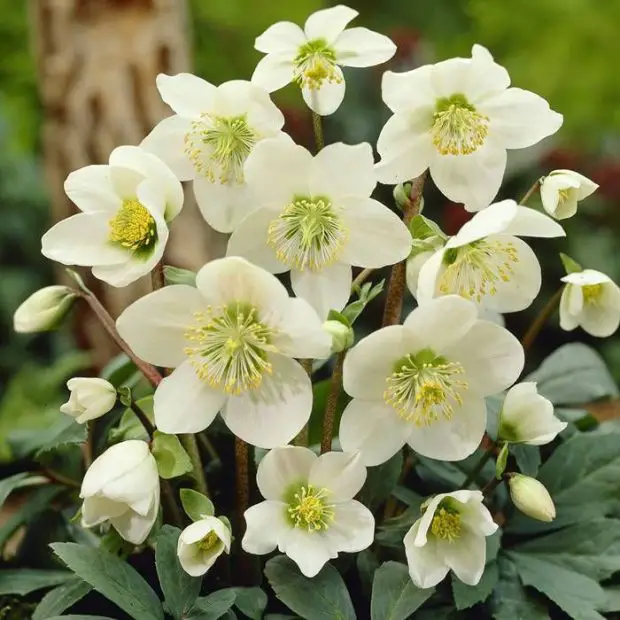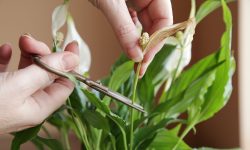Hellebores, often referred to as Lenten roses, are a beloved addition to winter and early spring gardens. With their nodding, cup-shaped flowers in soft shades of white, pink, green, and purple, hellebores offer a welcome burst of color during the colder months. Gardeners treasure them not only for their beauty but also for their durability, shade tolerance, and ability to thrive in less-than-ideal soil conditions.
Knowing when to plant hellebores is critical to ensuring long-term health and vibrant blooms year after year. By choosing the optimal time and understanding the needs of this hardy perennial, you can create a garden that comes to life even when most plants are still dormant.
Understanding Hellebore Growth Cycles

To grow hellebores successfully, it’s essential to understand how they develop through the seasons. Hellebores are perennial plants with a unique growth cycle that sets them apart from many other flowering species. While most plants lie dormant during the coldest months, hellebores begin pushing up new growth in late fall to early winter. Their leathery, evergreen foliage provides year-round interest, but the real spectacle happens when buds form and flowers start to bloom in late winter or early spring.
During spring and early summer, hellebores continue to photosynthesize and store energy in their roots. By late summer, growth slows, and plants enter a brief rest period, preparing for their next blooming cycle. This rhythm means that hellebores need time to establish their roots well in advance of their flowering season. Understanding this timeline helps gardeners determine the best planting and care strategies to ensure vigorous blooming and healthy development each year.
Best Time of Year to Plant Hellebores
The ideal time to plant hellebores is in early fall or late winter to early spring, depending on your local climate. Planting in early fall, usually from September to October, allows the hellebore to settle into the soil while temperatures are still warm enough to encourage strong root growth before winter. This head start is critical, as a well-established root system will help the plant survive harsh weather and bloom more reliably in late winter or early spring.
In regions with colder winters, planting in very early spring—just as the ground thaws—is another excellent option. While you may not see flowers during the first year, this timing still gives hellebores several months to establish before the heat of summer slows their growth. Avoid planting in the height of summer, as extreme heat and dry soil can stress young plants and stunt development.
Regardless of whether you plant in fall or spring, always choose a mild day when the soil is workable and not waterlogged or frozen. Proper planting timing lays the foundation for years of beautiful blooms and vigorous foliage.
Climate Considerations for Planting Hellebores
Hellebores are cool-season perennials that flourish in temperate climates, making them ideal for USDA hardiness zones 4 through 9. Their tolerance to cold makes them especially valuable for early spring color, even blooming through snow in some areas. However, while hellebores can withstand winter chill, they are sensitive to intense summer heat. In warmer zones like 8 and 9, they should be planted in locations with afternoon shade and rich, consistently moist but well-draining soil to prevent heat stress and dehydration.
In colder climates, hellebores benefit from protection against harsh winter winds and deep freezes. Planting near buildings or under deciduous trees can help buffer temperature extremes while still allowing for adequate winter light. Mulching around the base of the plants helps insulate the roots in both cold and warm regions, preserving moisture and protecting against sudden temperature swings. Understanding your local climate will help you time planting and select the right hellebore varieties to ensure year-round success.
Choosing the Right Location for Long-Term Success
Selecting the proper location is key to ensuring hellebores thrive for years with minimal intervention. These shade-loving perennials prefer a site with dappled or filtered sunlight, ideally beneath deciduous trees or on the eastern side of a building where they receive morning light and afternoon protection. Avoid full sun in hot regions, as intense heat can scorch their leaves and shorten the blooming period.
Equally important is soil quality. Hellebores flourish in rich, well-draining soil enriched with organic matter like compost or leaf mold. A slightly acidic to neutral pH (between 6.5 and 7.0) supports optimal nutrient uptake and healthy root growth. Avoid planting in heavy clay or waterlogged soil, which can lead to root rot and stunted development.
Air circulation is another factor to consider. Although hellebores are tolerant of crowded plantings, placing them in a spot with good airflow helps reduce the risk of fungal diseases, especially in humid or rainy climates.
Finally, think about visibility. Since hellebores bloom in late winter to early spring—often when little else is flowering—choose a spot where you can enjoy their beauty up close. Near entryways, pathways, or patio edges are perfect places to appreciate their early-season blooms and unique foliage throughout the year.
Preparing the Soil Before Planting
Preparing the soil properly before planting hellebores is essential for strong establishment and long-term health. Begin by loosening the soil to a depth of 12 to 15 inches to allow the roots to spread easily. If the soil is compacted or heavy with clay, mix in generous amounts of organic matter such as compost, well-rotted manure, or leaf mold. These amendments improve drainage, increase soil fertility, and promote beneficial microbial activity.
Good drainage is particularly important, as hellebores are prone to root rot in soggy conditions. In areas with poor drainage, consider creating a raised bed or slightly mounding the planting site to keep the root zone elevated above excess moisture. Adding grit or coarse sand can also help improve texture and prevent waterlogging.
Before planting, check the soil’s pH using a simple test kit. Hellebores prefer a slightly acidic to neutral pH between 6.5 and 7.0. If the soil is too acidic, adding garden lime can help raise the pH to a more suitable range.
Take time to remove any weeds, rocks, or debris that might compete with young plants. When the soil is loose, rich, and well-drained, hellebores can establish quickly and reward you with strong foliage and prolific blooms for years to come.
How to Plant Hellebores the Right Way
Planting hellebores properly from the beginning lays the foundation for healthy growth and long-lasting blooms. Start by digging a hole that is about twice as wide as the plant’s root ball and equal in depth. This gives the roots plenty of room to spread and establish themselves. Before placing the plant into the hole, inspect the root ball—if it appears compacted or root-bound, gently tease the roots apart to encourage outward growth.
Place the hellebore in the hole so that the crown—the point where the stems meet the roots—is level with or just slightly above the surrounding soil. Planting too deeply can cause crown rot and may prevent the plant from flowering properly. Once the plant is positioned correctly, backfill with a mix of native soil and compost or well-rotted organic matter to enrich the planting area.
Firm the soil gently around the plant to eliminate air pockets, then water thoroughly to help settle everything into place. A light layer of mulch, such as leaf mold or bark chips, can be applied around the plant to help retain soil moisture and prevent weed growth, but avoid piling it directly against the crown. With proper planting, hellebores will quickly adapt to their new environment and reward you with beautiful blooms for many winters to come.
Caring for Young Hellebores After Planting
After planting, young hellebores need consistent care to establish strong roots. Water them regularly during the first growing season, especially in dry periods, to keep the soil lightly moist but not soggy. Monitor their condition closely—new growth is a good sign that the plant is settling in well.
Provide partial shade to protect young hellebores from harsh sun, particularly in warmer climates. Apply a light layer of mulch to regulate soil temperature and reduce weed competition. Avoid fertilizing too heavily in the first year; a balanced, slow-release fertilizer in early spring is usually sufficient to support healthy development. With gentle care, young hellebores will mature into resilient, low-maintenance perennials that thrive for years.
Companion Plants to Enhance Blooming
Choosing the right companion plants for hellebores not only enhances the visual appeal of your garden but also supports healthier and more abundant blooming. The key is to pair hellebores with plants that thrive in similar conditions—partial shade, well-drained soil, and cooler temperatures.
Spring-flowering bulbs like snowdrops, crocuses, and daffodils make excellent companions. Their early blooms create a vibrant tapestry alongside hellebores and fill in gaps before other perennials awaken. Ferns and hostas also pair beautifully, offering contrasting textures that highlight the hellebore’s leathery foliage and nodding flowers. For more long-lasting interest, consider planting with shade-loving perennials such as lungwort (Pulmonaria), brunnera, or bleeding heart (Dicentra), which extend the garden’s appeal well into spring and early summer.
Companion planting can also help with soil health and moisture retention. A diverse, layered planting scheme not only looks stunning but also creates a microclimate that helps hellebores stay cool and protected, promoting stronger, longer-lasting blooms.
When Hellebores Begin to Bloom
Hellebores are among the first flowers to bloom in the garden year after year, often defying the chill of late winter and early spring. In most temperate regions of the United States, hellebores begin to bloom between January and March, depending on the local climate, variety, and growing conditions. Some types, like Helleborus niger—often called the Christmas rose—can even start flowering as early as December in milder zones.
The blooming process usually begins slowly, with buds forming low to the ground beneath last season’s foliage. As temperatures rise slightly and daylight hours increase, the blooms push through and gradually open, bringing color and life to an otherwise dormant landscape. In cooler climates, blooming may be delayed until late winter or early spring, but hellebores are remarkably frost-tolerant and will continue to bloom even during cold snaps.
Most hellebore flowers will stay vibrant for six to eight weeks or longer, especially when protected from harsh winds and extreme sun. Their long-lasting blooms not only brighten shady areas but also provide valuable early nectar for pollinators emerging from winter dormancy. Understanding your region’s seasonal pattern will help you anticipate the first appearance of these enchanting flowers and better plan their placement for maximum visual impact.
Common Problems and How to Prevent Them
Although hellebores are tough perennials, they can face a few common issues that affect their health and blooming potential. Early prevention and proper care make a big difference.
Black spot disease often appears as dark patches on leaves and is caused by excess moisture or poor airflow. To prevent it, remove old leaves in late winter, space plants well, and water at the base.
Aphids may gather on new growth in spring, causing distortion. A strong water spray or insecticidal soap can control them effectively if caught early.
Slugs and snails may damage tender foliage. Reduce hiding spots and use natural deterrents like crushed eggshells or diatomaceous earth around the base.
A more serious issue is Hellebore Black Death, a virus that causes black streaks and deformed growth. Infected plants should be removed immediately to prevent spreading.
With regular monitoring, proper spacing, and good sanitation, most hellebore problems can be avoided or managed easily.
When to Divide or Transplant Hellebores
The best time to divide or transplant hellebores is in early spring or early fall, when temperatures are mild and the plant is not actively blooming. Dividing in early spring just as new growth appears allows the plant to recover quickly before summer. Fall division, after flowering has ended and the plant begins to go dormant, also gives roots time to settle before winter. Avoid moving hellebores during hot or freezing weather, as this can stress the plant. Dividing every 4–5 years helps rejuvenate older clumps and encourages more vigorous blooming. Always replant divisions promptly in well-prepared soil.
FAQs About Planting Hellebores
When is the best time to plant hellebores for optimal blooming?
The ideal time to plant hellebores is in early fall or late winter to early spring, depending on your climate. Fall planting gives the roots time to establish before the next growing season, leading to earlier and more vigorous blooms. In colder regions where the ground freezes deeply, late winter or early spring is a safer option once the soil becomes workable.
How long does it take hellebores to bloom after planting?
If planted from seed, hellebores may take two to three years to bloom. However, if you plant nursery-grown hellebore plants that are already one or two years old, you may see flowers by the following season. The timing depends on the plant’s maturity, the planting season, and how well it adapts to your soil and light conditions.
Can I grow hellebores in containers?
Yes, hellebores grow well in containers as long as the pots have excellent drainage and are deep enough to accommodate their root systems. Use a rich, organic potting mix and place the container in a partially shaded location. Be aware that container-grown hellebores may need more frequent watering and seasonal repotting to prevent root crowding.
What kind of soil do hellebores prefer?
Hellebores thrive in well-draining, humus-rich soil with a slightly acidic to neutral pH (around 6.5 to 7). They dislike heavy, waterlogged soils, which can lead to root rot. Amending your planting area with compost, leaf mold, or aged manure will improve both drainage and fertility, supporting strong root development and lush foliage.
How can I encourage more blooms on my hellebores?
To encourage better blooming, plant hellebores in partial shade with some winter sunlight, especially in cooler zones. Regularly feed with a balanced, slow-release fertilizer in early spring and again in fall. Remove old, tattered foliage in late winter to redirect the plant’s energy into flower production and to reduce the risk of disease.
Do hellebores self-seed or spread in the garden?
Yes, hellebores often self-seed and can slowly spread over the years, especially when grown in favorable conditions. While self-seeding produces new plants, the seedlings may differ from the parent in color and form. If you want to maintain specific cultivars, it’s better to propagate them by division rather than relying on seed.
Conclusion: Enjoying Years of Winter Beauty
Planting hellebores at the right time is the first step toward enjoying an elegant, low-maintenance display that brightens the garden when few other flowers dare to bloom. With proper timing, site selection, and care, your hellebores will reward you with striking flowers, evergreen foliage, and enduring charm through the coldest months. Embrace this unique perennial, and your winter garden will never be dull again.






